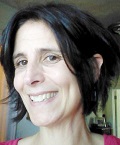Next Gen Navigator
Inspiring and Engaging Teachers in Professional Learning at NSTA Conferences
Posted on 2021-06-28

Disclaimer: The views expressed in this blog post are those of the author(s) and do not necessarily reflect the official position of the National Science Teaching Association (NSTA).
During my first year of teaching—1998—my district sent me and my colleagues to the NSTA National Conference in Las Vegas. (Perhaps I crossed paths with some of you in the conference halls.) What I remember most was feeling excited to be part of this national community of educators; forgetting my own name when I asked Bill Nye, the Science Guy, for his autograph; and the conference session “Shifting From Activitymania to Inquiry.” A single line in my copious notes from this session proved to be my greatest inspiration in teaching middle school students science: There is a definite difference between doing science and doing science activities. I followed the guidance provided in the session to teach in a way that reflected this idea in my classroom.
Contemporary research on how students learn science, as articulated in A Framework for K–12 Science Education, has moved thinking about what it means for students to do science forward. Students doing science are engaged in the three dimensions (disciplinary core ideas, science and engineering practices, and crosscutting concepts) to figure out a puzzling, intriguing, or compelling phenomenon that they experienced as part of a learning community and that they care about or are concerned with. Doing science is how students build science literacy. This vision of how we provide opportunities for all students’ access to science literacy is called sensemaking.
In this issue of the Next Gen Navigator, three teachers share stories about being inspired by sessions they attended during the NSTA Engage: Spring21 conference and reflect on how the sessions support opportunities for sensemaking in the classroom.
The session Using Picture Books to Make ‘Text to Investigation’ Connections (presented by Christine Royce) inspired Judy Boyle to use trade books to help young children recognize when characters in stories are thinking, acting, and talking like scientists and engineers, then use the books to engage students themselves in the practices of scientists and engineers.
Brian Klaft, a veteran middle school science teacher, was inspired to consider students’ experiences in his classroom and strategize about how to establish a more equitable classroom culture after attending Preparing to Tackle Equity, Diversity, and Inclusion in Science Education (presented by Alicia Conerly).
Wildfires, Drought, and the Future of Forests (presented by Jonathan Griffith) inspired Tina Hovence, a secondary science coordinator, to use the lesson to inspire the teachers in her district to continue their instructional shift toward sensemaking. She immediately recognized critical aspects of sensemaking in the lesson: a compelling phenomenon and opportunities for students to engage with real-time data and track their learning progress using science and engineering practices.

Kate Soriano
Next Gen Navigator Guest Editor
Kate Soriano began her career as a geologist for the Environmental Protection Agency’s Superfund program. Her work explaining science to affected communities made her realize that many people lacked access to a high-quality science education, and she wanted to change that. Soriano now has more than 20 years of experience teaching K–12 students science in both formal and informal educational settings. She currently serves as NSTA’s Standards Implementation Specialist, supporting teachers in implementing the NGSS and other three-dimensional standards based on A Framework for K–12 Science Education.
>> Finding New Ways to Use Picture Books in the Classroom
By Judy Boyle
>> Conference Sessions on Equity, Teacher Collaboration Provide Benefits
By Brian Klaft
>> Discovering Ways to Shift Lessons Along the Sensemaking Continuum
By Tina Hovance
Note: The Next Gen Navigator is a monthly e-newsletter from NSTA delivering information, insights, resources, and professional learning opportunities for science educators by science educators on the Next Generation Science Standards and three-dimensional instruction. Click here to sign up to receive the Navigator every month.
The mission of NSTA is to promote excellence and innovation in science teaching and learning for all.
Distance Learning NGSS Professional Learning old Teacher Preparation Teaching Strategies Three-Dimensional Learning Middle School Elementary High School


